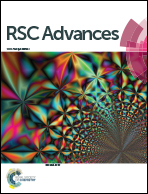Improving piezoelectric properties by controlling phase structure and crystal orientation
Abstract
In this study, 〈001〉-textured (1 − x)K0.48Na0.52Nb0.96Sb0.04O3-xBi0.50(K0.48Na0.52)0.50Zr0.50Hf0.50O3 [abbreviated as (1 − x)KNNS-xBKNZH, x = 0.01–0.04] lead-free ceramics were prepared by templated grain growth (TGG) method and sintered by a two-step process. Excellent longitudinal piezoelectric coefficient d33 (434 pC N−1) and piezoelectric strain coefficient  (722.5 pm V−1) are achieved in the textured 0.97KNNS-0.03BKNZH ceramics. The excellent piezoelectric properties can be ascribed to both the coexisting R–O–T multiphases and the 〈001〉 crystal orientation. In addition, a high electromechanical coupling coefficient kp (∼73.6%) is attained in textured ceramics with x = 0.02. The values of d33 and kp also display high thermal stability (with rate of change < ±10%) over 25–120 °C in textured ceramics with x = 0.03 and 0.04. Excellent comprehensive properties suggest that 〈001〉-textured (1 − x)KNNS-xBKNZH ceramics are promising lead-free candidates for actuator and transducer applications.
(722.5 pm V−1) are achieved in the textured 0.97KNNS-0.03BKNZH ceramics. The excellent piezoelectric properties can be ascribed to both the coexisting R–O–T multiphases and the 〈001〉 crystal orientation. In addition, a high electromechanical coupling coefficient kp (∼73.6%) is attained in textured ceramics with x = 0.02. The values of d33 and kp also display high thermal stability (with rate of change < ±10%) over 25–120 °C in textured ceramics with x = 0.03 and 0.04. Excellent comprehensive properties suggest that 〈001〉-textured (1 − x)KNNS-xBKNZH ceramics are promising lead-free candidates for actuator and transducer applications.



 Please wait while we load your content...
Please wait while we load your content...